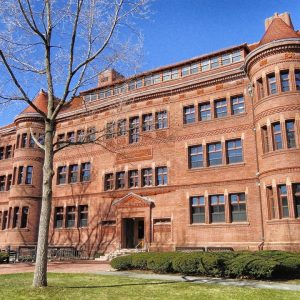An ethical algorithm… 
Ethics in algorithms is a popular topic now. Usually the conversation centers around the possible unintentional bias or harm that a statistical or machine learning algorithm could do when it is used to select, score, rate, or rank people. For example – a credit scoring algorithm may include a predictor that is highly correlated with race, and could result in racially-biased decisions.
There are contrary cases, though. The use of discretionary human judgment to admit students to highly selective universities is fraught with controversey and allegations of bias. Here’s a proposal for a simple statistical selection technique to assure diversity while avoiding bias. It is best illustrated with Harvard University, and a court case that has brought notoriety to the university’s admission process.
“An art collection that could conceivably come our way…”
With 19 rejections for every acceptance, entry to Harvard can seem like a moonshot. The family art collection was one student’s advantage in applying to Harvard. It’s no secret that big donors, or potential donors, have a leg up when it comes to their kids getting into Harvard, Princeton, or any of hundreds of universities.Still, it was unusual to see the plain truth out in the open – the “art collection” reference came in an email from Harvard’s Admission Director, made public in a lawsuit brought by Asian Americans claiming discrimination by Harvard.
Big donations are only one fast track to Harvard. Athletics, obviously, is another. Being from a rural area helps. Admission officers have considerable discretion, much of it is exercised in the service of ethnic diversity. But tilting the scale in favor of one ethnic group inevitably tilts it against another, and pursuit of diversity, as currently practised, runs right up against legal prohibitions against discrimination.
Another Way
Harvard and similar institutions rely on human judgment in favoring one group over another, which can leave them defenseless against charges of bias. A simple idea can extricate Harvard from this affirmative action bind while promoting diversity:
Choose students by random lottery, the time-honored statistical technique for eliminating bias and ensuring equal representation.
A minimum threshold of qualifications can be established, and the pool can be those applicants judged capable of academic success. According to the trial evidence, a large number of applicants – far more than the number admitted – meet this standard (children of alumni and donors are admitted at 6 times the normal rate, and Harvard says they do fine). Preferences for legacies, athletics, etc. could be retained, but, if too great they could compromise the perceived validity of this suggested new method.
A key tweak will assure diversity in all respects, not just racial: choose from each zip code according to population. Applicants whose parents have the money and drive to push their kids into enriching pre-college activities to boost their chances will no longer have an edge.
In stratified sampling, the population to be sampled is split up into strata to facilitate adequate representation of groups of interest. How will geographic stratification work?
Random selection with geographic stratification
The new admission algorithm can work like this:
- Divide the country into equal population zones (using zip code, for the sake of argument).
- Establish how many applicants will be accepted, and divide the allowance equally among the zones.
- Establish the minimum qualifications (using numerical criteria like SAT and grades).
- Select an equal number of applicants from each area, picking randomly from those above the qualification threshold, and staying within the zone allowance.
How will this ensure diversity? In the current, judgment-based system, Harvard takes into account personal and social characteristics other than pure intelligence – participation in extra-curricular activities, an engaging personality, and performance in an interview. Students in wealthy suburban neighborhoods absorb more of this college-bound ethos and ambiance than than those from poorer areas, whether urban or rural, where going to college is not the norm. If Harvard selects randomly from all geographic zones according to population, it will necessarily end up with a diverse student body since it will need to “dig deeper” in zones where the path to college is not so well-trodden.
Harvard and its peers are uniquely positioned to try this experiment:
- They can well afford to risk potential diminution of alumni affinity and money (the income alone from Princeton’s endowment would allow it to give free tuition to every student, with plenty left over).
- Their reputation is so well-established that it no longer need rest on the achievements of “super-students.”
- The pool of well-qualified applicants is so vast, relative to admissions, that lowering the admission bar in some geographic areas will still yield fully qualified applicants.
- As private universities, Harvard and its peers need not worry about politically-appointed Regents or meddling state legislatures.
Best of all, a sound map-based stratified sampling plan will extricate Harvard and its peers from the legal and political bind of affirmative action. There is nothing objectionable about selection in which geography (as opposed to race or ethnicity) is a factor. Moreover, reducing elite institutions’ role in nurturing and heightening supposedly inherent distinctions of merit among individuals will also have a salutary democratizing effect.
